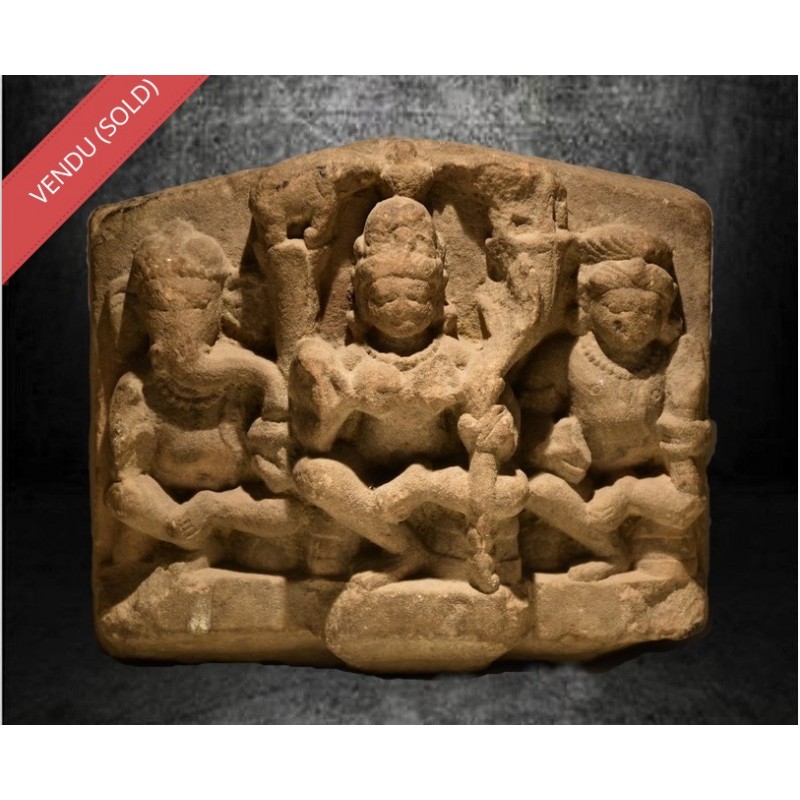



Fragment of frieze carved in sandstone. Representation of Ganesh, Parvati and Karttikeya. Gupta style, North of India, 10th-12th century.
Height: 15 cm
Length: 19 cm
Depth: 6 cm
Weight: 3600 g
Unmounted part
The Gupta dynasty settled in the North of India at the end of the 3rd century but its origins are not well known. From the 4th century, they developed, reached their peak during the first half of the 5th century and then declined, mainly due to external invasions. We retain from this short period of history the names of Chandragupta and Samudragupta during the reign of Kumâragupta and his son Skandagupta.
At that time, Brahmanism (which we now call Hinduism) and Buddhism still coexist. In terms of sculpture, we generally speak of the schools of Mathura and Sārnāth and the temple of Deogarh.
The frieze fragment that we offer for sale was probably made between the 10th and 12th centuries in the North of India (Ganges valley). The Gupta dynasty had disappeared, but many sculptors were still inspired by creations from this period.
He represents Ganesh, Parvati and Karttikeya.
Among the Hindu gods, Ganesh is the protective god of homes. We invoke him before undertaking something to ask him to remove all obstacles. He is one of the most revered deities in India. Her father was Shiva, the liberating god, and her mother was Parvati, goddess of beauty.
Parvati (Sanskrit: पार्वती (Pārvatī)) is a Hindu goddess. Her name means "woman of the mountain". She is the reincarnation of Sati. Sister of Vishnu and wife of Shiva, she is considered as the “supreme feminine principle” by the shaktas and in certain tantric cults.
In Hinduism, Kârttikeya, Kumara or Skanda (from Sanskrit, skand, "emit"), is the god of the divine army (his wife or shakti, Devasena), and is presented, according to one of the legends about his birth, like the son of Shiva and Pârvatî.
The piece presented for sale was acquired in the mid-twentieth century, it enters a private collection. It is neither mounted nor exposed. The owner at the time sold this piece to a Belgian investor. The piece is presented for sale in Italy and goes through the hands of experts in 2017. In 2020, the current Belgian owner decides to sell this piece and mandates our company to do so.
This piece is currently visible in the suburbs of Brussels by appointment.
This part is sold raw, unmounted